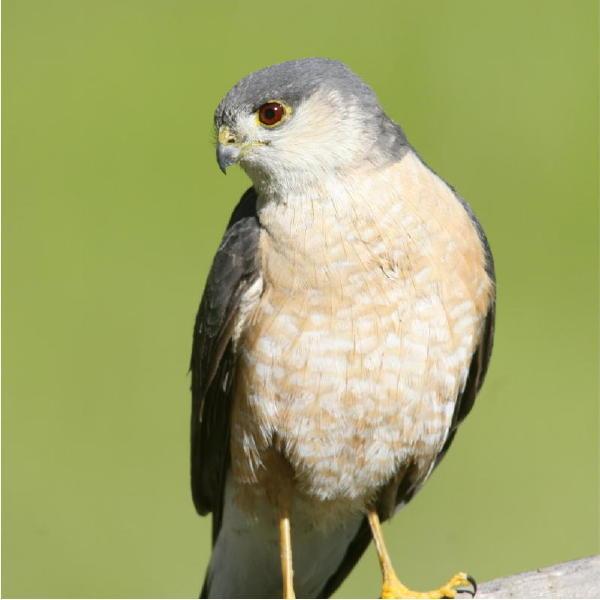The Sharp-Shinned Hawk:A Never Ending Presence at Bird Feeders
By Dave Hanks
There he was, sitting on a wheel that is anchored on the top of a post – a post that holds an assortment of our bird feeders, right outside our window and only a few feet distance. There we were, looking eye to eye. Suddenly a Magpie appeared on a branch of a close-by tree. He apparently wanted to be part of the action. Magpies seem to get a “kick” out of courting danger and by taking chances; it seemingly, enlivens their lives.
However, this was not close enough. The Magpie flew down to a feeding platform that was not more than eight feet from the “bird eating” hawk. He was clearly trying to annoy the hawk. My wife hypothesized that the Magpie must be too large for this small hawk to take. That was contrary to the hawk’s opinion, as he was off in a flash and flashed by the Magpie. He just barely missed the bird, who escaped by dodging and undulating quickly to escape. It was a marvelous, wonderful chase. One may feel bad about other birds getting consumed, but the predator must eat too. This time, however, the meal escaped – barely. Exciting, Huh?
Sharp-Shinned Hawks have a falcon-like, streamlined body (10-14 inches long) that allows them to maneuver swiftly through the trees. I am always amazed at the speed that this is accomplished! The “Sharp-Shinned” is differentiated from his look-alike cousin “the Cooper’s” by his smaller size and a squared, instead of rounded, end to his tail.
“Sharpies”, as they are often called, can be found in a wide range of woodland and forest types and around urban areas where birds are fed. They usually ambush their prey – swiftly flying from cover to make the attack. If other birds sense a hawk, they will either quickly scatter into the bushes or freeze where they sit, hoping to blend in with their surroundings.
Eggs are incubated for 16 to 23 days and the young fledge at a month of age. The parents will continue to feed them in mid-air, feeding the one who gets there first.
Young “Sharpies” have yellow eyes and a brownish, speckled chest. Their eyes and chest turn reddish as they reach maturity.
(Sitting on a water trough pole in north Heglar Canyon)
|
